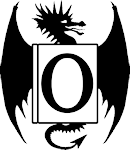The Lady from the Black Lagoon: Hollywood Monsters and the Lost Legacy of Milicent Patrick
Mallory O'Meara
Hanover Square Press
Nonfiction, Biography/History/Media Reference
Themes: Cross-Genre, Girl Power, Stardom
****+
Description
When she was a little kid, sitting in front of the TV at her grandparents' house, Mallory was entranced by the demon lord Chernabog in Disney's iconic animated feature Fantasia. Thus began a lifelong love affair with movies in general and horror in particular. The Universal classic monster pantheon held a special place in her heart, particularly the iconic Creature from the Black Lagoon. The costume, a stunning melding of man and fish, was officially credited to makeup master Bud Westmore, but it was not until the advent of the internet that most modern fans learned who really designed it: a woman named Milicent Patrick, whose identity and legacy others tried to erase. To rectify this injustice, O'Meara sets out to uncover the truth about Patrick, an enigmatic woman whose life and struggles in Tinsel Town seemed at times to parallel her own journey.
Review
The story of Milicent Patrick is a story that should be relegated to the history books: a woman struggles to break in to an
industry where her talent shines through, but instead of a brilliant future finds herself shut out by men who cannot stand a
girl in their clubhouse or "stealing" the limelight they think should be theirs alone, where legacy names and money and
soothing a tyrant's ego matter more than justice and truth. Unfortunately, it's a story that has played out numerous times
before and since, up through today. O'Meara does not paint her subject as a superheroine or flawless icon, or as a relentless
fighter who pushed back against the patriarchy at every turn, but as a human whose only extraordinary gift was staying true to
herself no matter what happened. From a childhood under an iron-fisted father (an architect and structural engineer whose work
kept the family traveling for years, eventually contributing to Hearst's massive California estate) and conservative mother,
Milicent grew up to study art and land a job with Disney's animation studio - then one of the best places for a woman artist to
be, for all that Disney was no saint or savior himself - while also pursuing acting work to capitalize on her striking looks,
though she never moved much beyond bit parts. Eventually, her on-set sketches caught the attention of Bud Westmore, but the
man's notorious cruelty, petty jealousy, and fragile ego would eventually cut her down just when she stood on the threshold of
movie immortality. Even at the time, many people knew just how wrong it was, but not a one managed to stop it from happening,
nor did they do anything to mitigate the aftereffects.
O'Meara intercuts the story of Milicent Patrick with her own efforts to research a woman who proved remarkably hard to track;
she had a habit of changing her name and reinventing her own backstory over the years, making it that much harder to figure out
her movements. She was also estranged from her family from an early age, which further limited the potential pool of resources.
Add to that the way that women are still generally overlooked and undervalued in the entertainment industry, their
contributions conveniently swept into the corner and forgotten, and the task became that much harder. Still, even though she's
primarily a film producer and not a researcher, O'Meara pushed onward, finding more reasons to admire Milicent Patrick even as
she acknowledges the woman's faults... and more reasons to be incensed that, since Patrick's day, the needle on industry
misogyny and under-representation of women and nonwhites and other minorities has still not moved much, despite moments like
the #MeToo movement shining spotlights on the ugly secrets of Hollywood. There are several incidents in Patrick's life that
directly resonate with O'Meara's, and doubtless others who push their way into spaces and industries that have traditionally
been dominated by white cishet males. The way in which someone who created such an important movie icon can be nearly forgotten
- when she was the subject of numerous public interviews and served as a major face of Universal's promotion of The
Creature from the Black Lagoon - all because one monster of a man couldn't stand seeing a woman outshine him and a studio
decided appeasing him was more important than cultivating the talent so obviously visible in her is unsettling. One is left
wondering how many other people have been erased through the decades, and are being erased right now, because the same dynamics
that led to Milicent Patrick's removal from movie history are still very much evident. (And that's not counting the ones who
are cut down long before they got in the door in the first place.) Will anything ever change? Can anything ever change? I
honestly don't know, but that's why we need more Milicent Patricks... and more Mallory O'Mearas to make sure the Milicent
Patricks aren't left on history's cutting room floor.
